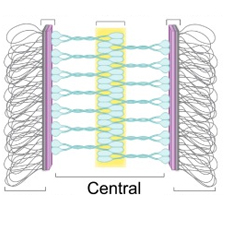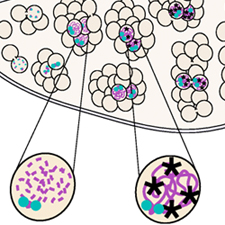Undergraduate Researcher, Emily Wesley, earns first authorship in Chromosoma article
Genetic background impacts the timing of synaptonemal complex breakdown in Drosophila melanogaster
.
Wesley ER, Hawley RS, Billmyre KK.
Chromosoma. 2020;129(3-4):243-254. doi:10.1007/s00412-020-00742-9
Abstract
Experiments performed in different genetic backgrounds occasionally exhibit failure in experimental reproducibility. This is a serious issue in Drosophila where there are no standard control stocks. Here, we illustrate the importance of controlling genetic background by showing that the timing of a major meiotic event, the breakdown of the synaptonemal complex (SC), varies in different genetic backgrounds. We assessed SC breakdown in three different control stocks and found that in one control stock, y w; svspa-pol, the SC broke down earlier than in Oregon-R and w1118 stocks. We further examined SC breakdown in these three control backgrounds with flies heterozygous for a null mutation in c(3)G, which encodes a key structural component of the SC. Flies heterozygous for c(3)G displayed differences in the timing of SC breakdown in different control backgrounds, providing evidence of a sensitizing effect of this mutation. These observations suggest that SC maintenance is associated with the dosage of c(3)G in some backgrounds. Lastly, chromosome segregation was not affected by premature SC breakdown in mid-prophase, consistent with previous findings that chromosome segregation is not dependent on full-length SC in mid-prophase. Thus, genetic background is an important variable to consider with respect to SC behavior during Drosophila meiosis.
Keywords
Genetic background; Meiosis; Synaptonemal complex.
Read More:
https://www.stowers.org/gradschool/news/oct-29-20

